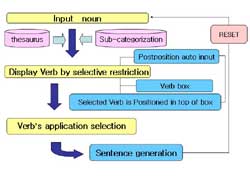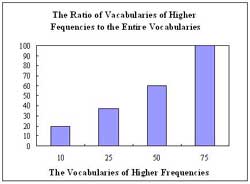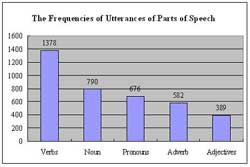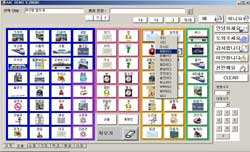Investigation of Vocabularies and Prediction of Verbs by AAC System for Speech Disorders
ABSTRACT
This study relates to developing an AAC system for helping communication of persons who suffer from speech disorders. One thing firstly considered for a successful AAC system is selection of vocabularies, and generation of sentences by maximizing the use of limited space in the AAC system. For this purpose, the above researchers collected utterances in actual situations to select vocabularies of higher frequencies, applied semantic and lexical interpretation to and analyzed the vocabularies and constructed a database, thereby embodying an AAC system that allows verb prediction in a limited space.
KEYWORDS
AAC system, speech disorders, vocabulary of higher frequency , verb prediction
BACKGROUND
Recently people are increasingly interested in AAC systems for persons suffering from speech disorders. As such persons successfully participate in education, social activities, religion, leisure, occupation, etc., necessity is required for changing the way of their communication. One of the most influential elements that affect on the necessity for changing is the development of technology. Development of such technology affects on successful communication of the people who have serious communication disorders, and remarkably on the AAC field for the people whose communication cannot be satisfied using spoken language. Therefore, selection of the first vocabulary is considered very important when developing such an AAC system (1). This is because poor vocabularies or improper selection of vocabularies from the AAC system may cause increased frustration of the AAC system users (2). Various prediction methods are sometimes applied for allowing the AAC system users to use the system more easily(3). Accordingly, in this study, the researchers constructed a database by collecting and analyzing actual utterances, selecting vocabularies of higher frequencies and using a lexical thesaurus and a subcategorization dictionary on the basis of the selection, and intended to implement an AAC system by applying the verb prediction method in order to overcome a limited space.
RESEARCH QUESTION
It is an object of this study to implement an AAC system which can predict verbs in a limited space by selecting vocabularies of higher frequencies through actually situational utterances, applying the thesaurus and the subcategorization dictionary to and analyzing respective vocabularies on the basis of the selection, thereby constructing a vocabulary database, in order to implement a successful AAC system for the persons who suffer from speech disorders.
METHOD
 |
|---|
In order to construct a vocabulary database which is the first step of developing the AAC system, the researchers collected spontaneous utterances during break times in schools and in daily living in order to collect vocabularies used frequently by ordinary people. The researchers chose nine types of conversational situations in restaurants, shopping centers, transportations, theaters, video shops, hospitals, banks, schools, and at home, related to ordinary living. In this research, total 11,092 vocabularies were analyzed from the situational utterances by 24 schoolchildren and 20 adults at schools, etc. by recording their utterances. The ratio of the vocabularies of higher frequencies to the entire vocabularies was then measured. And the verb prediction method was then devised in order to overcome special restrictions in an AAC system. The AAC system is a tool to help communication by generating a sentence if a meaning symbol is pressed, but has a special restriction that it is impossible to express all vocabularies with meaning symbols possibly without changing pages. Therefore, for a given sentence, the system was made by constructing a database through interpretation of lexical meanings for respective vocabularies to allow verbs to be selected through a popup menu when a user presses a noun meaning symbol as an entry, the meaning of the verb being matched to the noun . The verb prediction algorithm for this process is shown in the following diagram1.
RESULTS
 |
|---|
As a result of analyzing the ratio of vocabularies of higher frequencies to the entire vocabularies, it was shown that ten vocabularies of the first higher frequencies occupied 20%, 25 vocabularies of higher frequencies did 34%, and 50 vocabularies of the next higher frequencies did 58%, respectively, in the entire vocabularies. The result is shown in graph 2. With respect to the frequencies of utterances of parts of speech , the result showed that verbs were used 1,378 times, nouns 790 times, pronouns 676 times, adverbs 582 times and adjectives 289 times, which means that verbs were most frequently used. This is a datum that proves that prediction of verbs is more useful than that of other parts of speech in the AAC system. The result of constructing a database through such semantic analysis of vocabularies and predicting verbs in the AAC system is shown in graph 3.
 |
|---|
Photo 1 shows how the corresponding phrase is outputted and possible verb s are presented by the limited selection on a pop-up menu, when "train ticket for Pusan" is inputted by the corresponding semantic symbol. The verbs are presented in basic forms thereof and also provided with the marks such as . ? ! , which are required when the type of sentence is changed. If a user selects the basic form of verb , the verb is converted to a desired application form.
DISCUSSION
 |
|---|
A significance of this study is that this study was performed by actually visiting schools and other sites to record spontaneous dialogues and presented vocabularies of higher frequencies and frequencies of respective parts of speech. It was common in all researches that a small number of vocabularies of higher frequencies can be represented if the number of entire vocabularies is larger(4). The result of investigation that verbs are most frequently used as compared to the frequencies of use of other parts of speech fortifies that it is more efficient to select verbs of higher frequencies, to use the verb prediction method and for the user to generate a sentence in an AAC system to help his/her communication. AAC systems developed heretofore, however, are not suitable for all the persons suffering from speech disorders. Various AAC systems are actually required that can be an intellectual human interface depending on the level of disorders.
REFERENCES
- Yorkston, K., Honsinger, M., Dowden, P. & Marriner, N.(1989). “Vocabulary selection: A case report.” Augmentative and Alternative Communication, 15, 101-108.
- Carson, F(1981). “A format for selecting vocabulary for the nonspeaking child.” Language, Speech, and Hearing Service in Schools, 12, 240-248.
- David R. Beukelman, Pat Mirenda ( 1995 ), “ Augmentative and Alternative Communication , Management of Severe Communication Disorders in Children and Adults .” Paul .H. Brookes publishing Co. , 42-47
- Beukelman, D., Jones, R. & Rowan, M.(1989).” Frequency of word usage by nondisabled peers in integrated classrooms.”Augmentative and Alternative Communication, 5, 243-248
ACKNOWLEDGMENTS
This study was partially supported by Multimedia Research Center, University of Incheon.
Author Contact Information:
Eun-Sil Lee
HCI Lab., Dept. of Info.& Telecomm.eng.,
Univ. of Incheon,
177, Dohwa-dong, Nam-gu,
Incheon, Korea Office
Phone +82-32-772-2289
EMAIL:les@incheon.ac.kr
